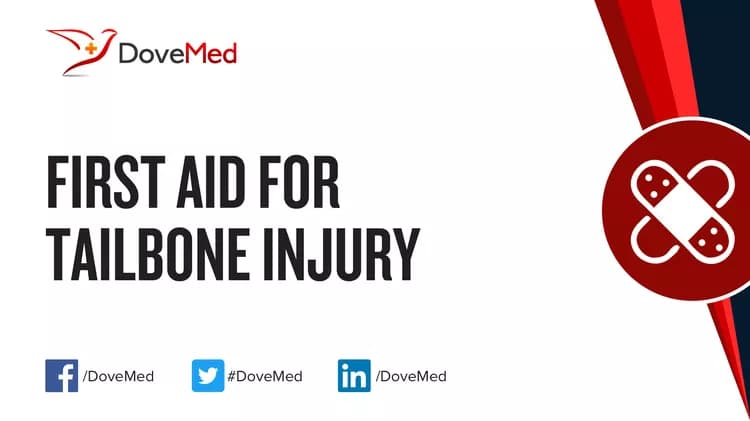What is Tailbone Injury?
- The tailbone or coccyx is the bottom-most part of the spine (final vertebral bone segment)
- A Tailbone Injury may be described as an injury caused to the tailbone, usually due to slipping on smooth surfaces and falling on one’s lower back (frequently in a seated position)
What are the Causes of Tailbone Injury?
Tailbone Injuries are caused by a variety of factors including:
- Fall injuries, when the fall injures the lower back or base of the spine. In many cases, when the falls cause the individual to forcefully drop on hard surfaces while in a sitting position, the chances of fracture to the tailbone is high
- Working on heights (such as on construction sites, plants)
- Automobile and sports-related injuries (caused from excess cycling or gymnastics)
- Occupational hazard related, while working with mechanical equipment
- House or building collapse from natural or manmade disasters
A Tailbone Injury may be also sustained by a pregnant woman during childbirth.
What are the Signs & Symptoms of Tailbone Injury?
The common signs and symptoms in case of a Tailbone Injury may include:
- Moderate to severe pain in the coccyx region (termed coccydynia) that increases while sitting, during bowel motion, etc.
- Bruising and swelling at the site of injury
- Hairline fracture
- Any application of pressure to the region of the tailbone, such as caused by sitting or leaning against a wall, may result in pain
- Weakness in the legs, unable to stand properly or comfortable
- The symptoms may be severe in older adults (particularly women), particularly those who are affected by a condition called osteoporosis
The signs and symptoms in case of a tailbone fracture may include:
- Nausea
- Swollen tailbone area
- Bruising, redness
- Severe pain while trying to sit or stand
- Pain while passing stool or during sexual intercourse
- Associated injury to the spine or lower back
How is First Aid administered for Tailbone Injury?
First Aid tips for Tailbone Injuries:
- For many cases of Tailbone Injuries, the following home care measures may be considered:
- Clean visible wounds with water
- Apply an ice pack to injury site to reduce swelling and pain; do not apply ice directly to the skin, wrap it up in a cloth or towel
- Take an over-the-counter pain medication for pain (for adults)
- Take a non-steroidal anti-inflammatory drug (NSAID) for inflammation and to help in easier movement (under prescription advise)
- Sit on soft surfaces such as pillows or donut-shaped soft air tubes
- Take a diet rich in fiber and stool softeners, to avoid hard stools
- Take the individual to a healthcare provider for further treatment, if necessary
- If there is an injury to the spinal column or pelvic bone, then call for emergency care immediately
Who should administer First Aid for Tailbone Injury?
- Any individual, in close vicinity of the injured person, can provide immediate comfort and first aid, but it is recommended to seek medical help for Tailbone Injuries causing severe pain and severe symptoms
- In case of a severe injury that affects other body regions too, calling 911 (or your local emergency number) is the first line of action
What is the Prognosis of Tailbone Injury?
- The prognosis for a Tailbone Injury is good in most cases. Many of the affected individuals recover completely through adequate home care and rest
- Individuals, who had had sustained severe injuries (such as older adults) may require suitable medical treatment at a hospital or clinic. Even so, the prognosis is generally good with proper therapy and follow-up care
How can Tailbone Injury be Prevented?
A few helpful tips to prevent Tailbone Injuries:
- Add safety features, such as non-slick patches and handrails to the stairs, to avoid fall injuries
- Be careful while walking around wet surfaces, such as by the side of a swimming pool or on ice
- Utilize suitable PPE (personal protective equipment) while performing certain dangerous activities, outdoor activities, or sports
- Carefully supervise children at parks and playgrounds
- Use seatbelts in motor vehicles
What are certain Crucial Steps to be followed?
- Avoid placing further stress on the coccyx/tailbone; lean forward while sitting, sit on soft cushions, take stool softeners for constipation, etc.
- Do NOT attempt to move any individual with a suspected head, neck, or back injury; or, if you suspect a broken hip or pelvis
- Immediately call 911 or your local emergency number, if the injury is severe
Related Articles
Test Your Knowledge
Asked by users
Related Centers
Related Specialties
Related Physicians
Related Procedures
Related Resources
Join DoveHubs
and connect with fellow professionals


0 Comments
Please log in to post a comment.